-
 Bitcoin
Bitcoin $81,899.5591
-5.17% -
 Ethereum
Ethereum $1,783.8667
-6.15% -
 Tether USDt
Tether USDt $0.9995
-0.03% -
 XRP
XRP $2.0489
-4.45% -
 BNB
BNB $587.4139
-2.79% -
 USDC
USDC $1.0001
0.02% -
 Solana
Solana $115.1373
-11.64% -
 Dogecoin
Dogecoin $0.1587
-8.43% -
 Cardano
Cardano $0.6385
-6.91% -
 TRON
TRON $0.2360
-1.08% -
 Toncoin
Toncoin $3.5760
-10.43% -
 UNUS SED LEO
UNUS SED LEO $9.3901
-0.32% -
 Chainlink
Chainlink $12.6219
-9.38% -
 Stellar
Stellar $0.2577
-4.87% -
 Avalanche
Avalanche $18.0492
-6.87% -
 Sui
Sui $2.2219
-9.39% -
 Shiba Inu
Shiba Inu $0.0...01218
-3.70% -
 Hedera
Hedera $0.1604
-7.08% -
 Polkadot
Polkadot $4.0288
-2.51% -
 Litecoin
Litecoin $82.2067
-5.10% -
 MANTRA
MANTRA $6.4186
1.43% -
 Bitcoin Cash
Bitcoin Cash $294.8176
-4.96% -
 Dai
Dai $0.9999
0.02% -
 Bitget Token
Bitget Token $4.4550
-3.01% -
 Ethena USDe
Ethena USDe $0.9995
-0.03% -
 Pi
Pi $0.5875
-13.39% -
 Monero
Monero $209.7409
-4.91% -
 Hyperliquid
Hyperliquid $11.2789
-16.95% -
 Uniswap
Uniswap $5.7386
-7.48% -
 Aptos
Aptos $5.0040
-7.56%
What does Gas fee mean when Ethereum enthusiasts say it?
Ethereum gas fees, measured in Gwei, vary based on network congestion and transaction complexity; strategies like batching and off-peak timing can minimize costs.
Apr 02, 2025 at 12:00 am
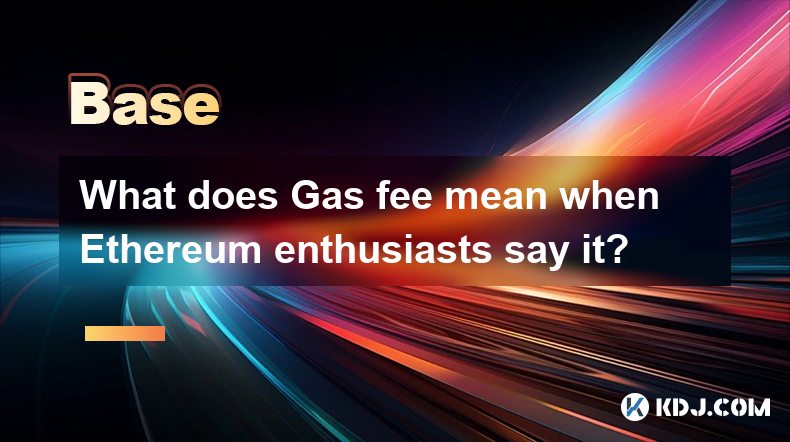
Understanding Ethereum Gas Fees: A Deep Dive
When Ethereum enthusiasts talk about "gas fees," they're referring to the cost of performing transactions on the Ethereum network. Unlike many other cryptocurrencies, Ethereum is not simply a transfer of tokens. It's a decentralized computing platform, enabling the execution of smart contracts and decentralized applications (dApps). Every interaction with this platform, from sending ETH to deploying a complex smart contract, requires computational resources. These resources are measured in "gas," and the cost of this gas is the gas fee you pay.
How Gas Works: Units and Pricing
Gas is measured in units, representing the amount of computational effort required for a transaction. Each operation within a smart contract or transaction consumes a certain number of gas units. The price of gas is determined dynamically based on network congestion. Higher demand means a higher gas price, as miners prioritize transactions offering higher fees. This price is expressed in Gwei, which is one billionth of an Ether (ETH). The total gas fee is calculated by multiplying the gas used by the gas price.
Factors Influencing Gas Fees
Several factors contribute to the variability of gas fees. Network congestion is a primary driver. When many users are interacting with the network simultaneously, the demand for gas increases, pushing up prices. The complexity of the transaction also matters. A simple ETH transfer consumes less gas than deploying a complex smart contract. Finally, the gas price you set directly impacts how quickly your transaction is processed. Setting a higher gas price increases the likelihood of miners prioritizing your transaction.
Setting Gas Price and Prioritization
You don't directly control the gas used, but you do control the gas price you're willing to pay. Many wallets and platforms offer suggestions for gas prices, often categorized as "slow," "average," and "fast."
- Slow: This option sets a lower gas price, resulting in longer processing times. It's suitable for non-urgent transactions.
- Average: This option offers a balance between speed and cost. It's a good choice for most transactions.
- Fast: This option sets a higher gas price, ensuring your transaction is processed quickly, even during periods of high network congestion.
Choosing the right gas price involves a trade-off between speed and cost. A higher gas price guarantees faster transaction confirmation but incurs a higher fee. Conversely, a lower gas price saves money but may lead to significant delays.
Understanding Gas Limit
In addition to the gas price, you also need to specify a gas limit. This is the maximum amount of gas you're willing to spend on a transaction. If the transaction requires less gas than the limit, you only pay for the gas consumed. However, if the transaction requires more gas than the limit, the transaction fails, and you lose the gas already spent. Therefore, accurately estimating the gas limit is crucial to avoid unnecessary costs and transaction failures. Most wallets and platforms provide gas limit estimations based on the transaction type.
Minimizing Gas Fees: Strategies and Tips
While you can't entirely eliminate gas fees, you can employ strategies to minimize them. One approach is to batch transactions whenever possible. Combining multiple transactions into one reduces the overall gas consumption. Choosing off-peak hours for transactions can also lower gas prices, as network congestion is typically lower during these periods. Finally, staying informed about current gas prices and network conditions allows you to make more informed decisions about when and how to conduct transactions.
Beyond the Basics: Gas and Smart Contracts
The concept of gas extends beyond simple ETH transfers. When interacting with smart contracts, gas fees cover the computational cost of executing the contract's code. Complex smart contracts with many operations will naturally consume more gas and incur higher fees. Understanding the gas consumption of a smart contract before interacting with it is essential to avoid unexpected costs. Many blockchain explorers provide gas usage data for smart contracts, allowing users to estimate the potential fees.
Gas Fees and Ethereum's Scalability
The high and volatile nature of gas fees has been a significant challenge for Ethereum's scalability. High gas fees can make interacting with the network prohibitively expensive for some users, particularly those using dApps with frequent interactions. Ethereum is actively working on solutions to address this issue, including layer-2 scaling solutions like rollups, which process transactions off-chain before settling them on the main chain, significantly reducing gas costs.
Frequently Asked Questions
Q: What happens if I set my gas price too low?
A: Your transaction might not be processed or could take a very long time to confirm, potentially even failing if the network congestion remains high.
Q: Can I get my gas fee back if my transaction fails?
A: No, the gas fee is consumed regardless of whether the transaction succeeds or fails.
Q: How do I estimate the gas limit for my transaction?
A: Most wallets and platforms provide gas limit estimations. You can also consult blockchain explorers for information on gas usage for similar transactions.
Q: Are gas fees the same for all transactions on Ethereum?
A: No, gas fees vary depending on the complexity of the transaction, network congestion, and the gas price you set.
Q: What are some ways to reduce my gas fees?
A: Batch transactions, conduct transactions during off-peak hours, and utilize layer-2 scaling solutions where available.
Q: What is Gwei?
A: Gwei is a unit of measurement for gas price on the Ethereum network. 1 Gwei is one billionth of an Ether (ETH).
Q: Why are gas fees so high sometimes?
A: High gas fees are primarily caused by increased network congestion, indicating high demand for Ethereum's computational resources.
Disclaimer:info@kdj.com
The information provided is not trading advice. kdj.com does not assume any responsibility for any investments made based on the information provided in this article. Cryptocurrencies are highly volatile and it is highly recommended that you invest with caution after thorough research!
If you believe that the content used on this website infringes your copyright, please contact us immediately (info@kdj.com) and we will delete it promptly.
- Builder: Stu
- 2025-04-04 03:25:12
- PayPal Adds Solana (SOL) and Chainlink (LINK) to Its Supported Cryptocurrencies
- 2025-04-04 03:25:12
- Recent Price Action Shows Signs of Recovery
- 2025-04-04 03:20:12
- Standard Chartered (AVAX)
- 2025-04-04 03:20:12
- WisdomTree Expands Its Institutional Tokenization Platform to 13 Funds
- 2025-04-04 03:15:12
- PEPE hopped its way to a $3.8M market cap, but its reign as a meme coin darling is fading. Enter InfluencerPepe (INPEPE)
- 2025-04-04 03:15:12
Related knowledge
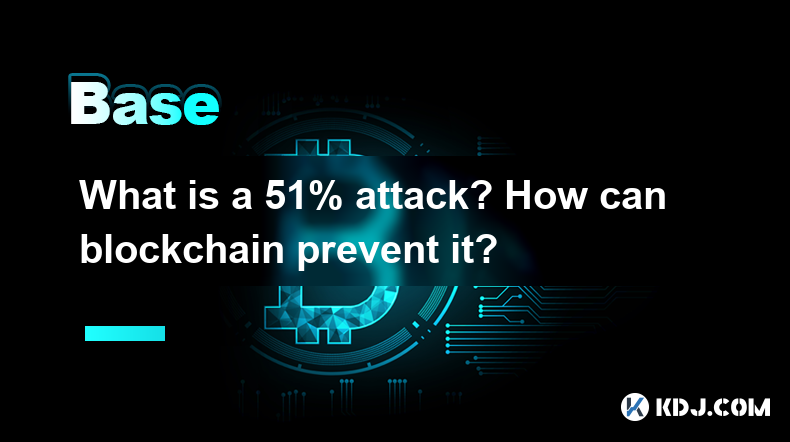
What is a 51% attack? How can blockchain prevent it?
Apr 04,2025 at 02:08am
A 51% attack is a significant threat to the security and integrity of a blockchain network. In this type of attack, a single entity or group gains control of more than half of the network's mining power or hash rate. This control allows the attacker to manipulate the blockchain by double-spending coins, preventing the confirmation of new transactions, o...

Why can the inverted hammer shape appear at the bottom be used as a reversal signal?
Apr 03,2025 at 04:07pm
Inverted Hammer is a common K-line pattern in technical analysis, and is often regarded as a potential reversal signal when it appears at the bottom. This article will explore in detail why an inverted hammer line may be a reversal signal when it appears at the bottom, and provide specific identification and application methods. Basic characteristics of...
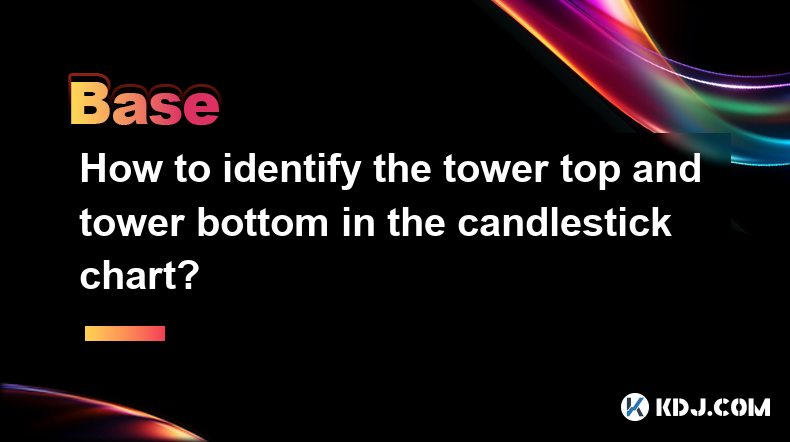
How to identify the tower top and tower bottom in the candlestick chart?
Apr 03,2025 at 04:03pm
In K-line chart analysis, 'Tower Top' and 'Tower Bottom' are two important reversal patterns and are usually used to predict changes in price trends. Identifying these patterns requires careful observation of the price trend and the pattern characteristics of the K-line. Below we will introduce in detail how to identify the 'tower to...
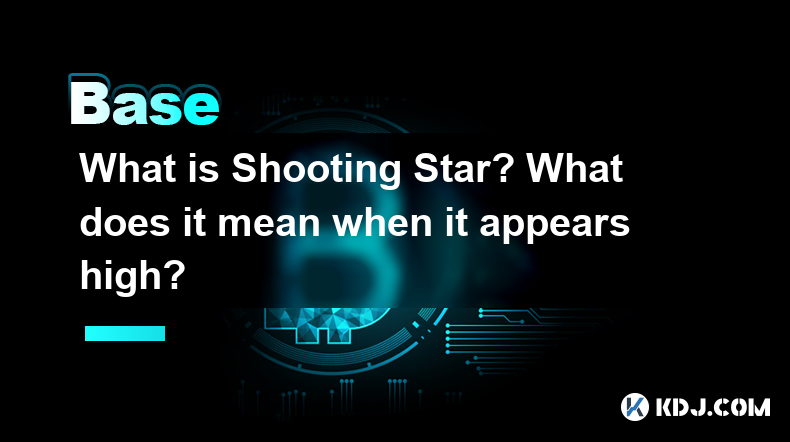
What is Shooting Star? What does it mean when it appears high?
Apr 03,2025 at 03:56pm
In cryptocurrency trading, technical analysis is an important tool to help traders predict future trends of the market. Among them, Shooting Star is a common bearish reversal pattern. This article will give you more details on what 'Shooting Star' is and what it means when it appears at a high level. The definition of 'Shooting Star'Shoo...

What is the difference between dark cloud cover and piercing shape?
Apr 03,2025 at 03:50pm
In the world of cryptocurrency trading, technical analysis is one of the important tools traders use to predict market trends and make trading decisions. Among them, 'Dark Cloud Cover' and 'Piercing Pattern' are two common reversal patterns, which have specific appearance and meaning on the K-line chart. Although they seem similar, there...
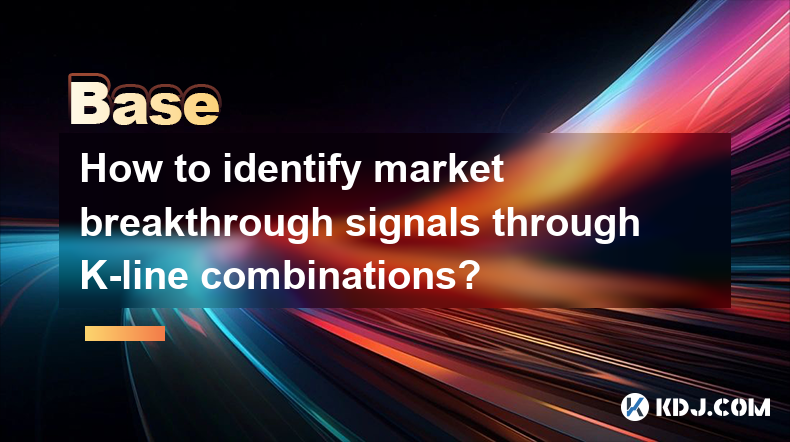
How to identify market breakthrough signals through K-line combinations?
Apr 03,2025 at 03:46pm
In cryptocurrency markets, identifying breakthrough signals is crucial for traders. K-line chart is a commonly used technical analysis tool. By analyzing K-line combinations, traders can more accurately identify the market's breakthrough signals. This article will introduce in detail how to identify the breakthrough signals of the market through the...

What is a 51% attack? How can blockchain prevent it?
Apr 04,2025 at 02:08am
A 51% attack is a significant threat to the security and integrity of a blockchain network. In this type of attack, a single entity or group gains control of more than half of the network's mining power or hash rate. This control allows the attacker to manipulate the blockchain by double-spending coins, preventing the confirmation of new transactions, o...

Why can the inverted hammer shape appear at the bottom be used as a reversal signal?
Apr 03,2025 at 04:07pm
Inverted Hammer is a common K-line pattern in technical analysis, and is often regarded as a potential reversal signal when it appears at the bottom. This article will explore in detail why an inverted hammer line may be a reversal signal when it appears at the bottom, and provide specific identification and application methods. Basic characteristics of...

How to identify the tower top and tower bottom in the candlestick chart?
Apr 03,2025 at 04:03pm
In K-line chart analysis, 'Tower Top' and 'Tower Bottom' are two important reversal patterns and are usually used to predict changes in price trends. Identifying these patterns requires careful observation of the price trend and the pattern characteristics of the K-line. Below we will introduce in detail how to identify the 'tower to...

What is Shooting Star? What does it mean when it appears high?
Apr 03,2025 at 03:56pm
In cryptocurrency trading, technical analysis is an important tool to help traders predict future trends of the market. Among them, Shooting Star is a common bearish reversal pattern. This article will give you more details on what 'Shooting Star' is and what it means when it appears at a high level. The definition of 'Shooting Star'Shoo...

What is the difference between dark cloud cover and piercing shape?
Apr 03,2025 at 03:50pm
In the world of cryptocurrency trading, technical analysis is one of the important tools traders use to predict market trends and make trading decisions. Among them, 'Dark Cloud Cover' and 'Piercing Pattern' are two common reversal patterns, which have specific appearance and meaning on the K-line chart. Although they seem similar, there...

How to identify market breakthrough signals through K-line combinations?
Apr 03,2025 at 03:46pm
In cryptocurrency markets, identifying breakthrough signals is crucial for traders. K-line chart is a commonly used technical analysis tool. By analyzing K-line combinations, traders can more accurately identify the market's breakthrough signals. This article will introduce in detail how to identify the breakthrough signals of the market through the...
See all articles






















































































